If you’ve raised ducklings, you likely ended up with an equal ratio of males and females—or, if you were unlucky, more males than females. Unfortunately, in most small, confined flocks, equal ratios just don’t work out. Drakes can fight viciously with each other and can be hard on females, sometimes even killing them.
To maintain peace and find a happy balance, it’s often necessary to remove excess drakes from a flock.
How to know if you need to reduce drake numbers
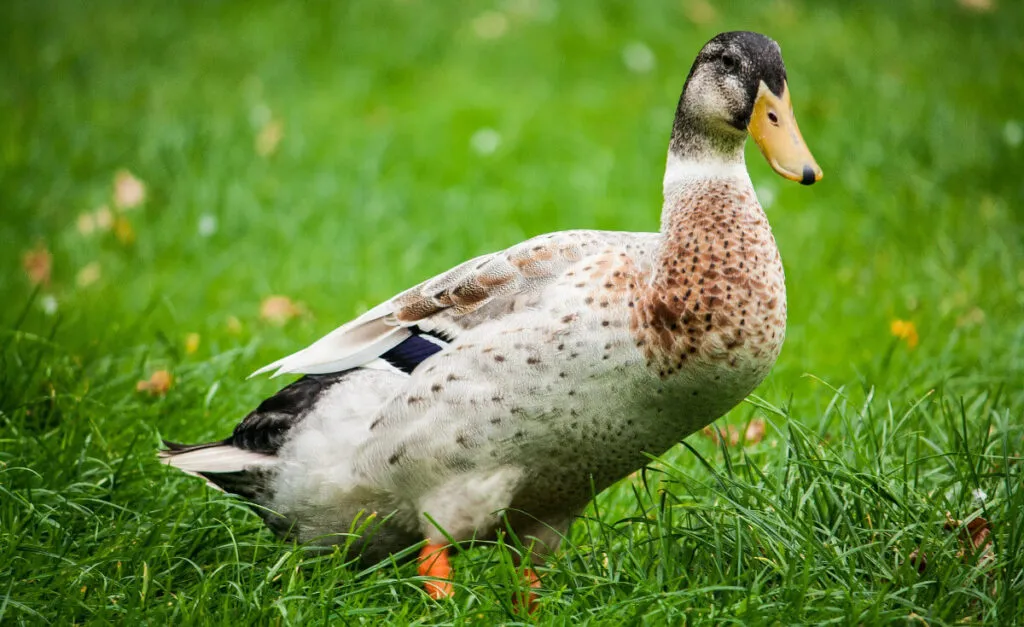
The general rule of thumb is that you need at least 4-5 females per male duck. In some flocks, it may be necessary to have more females per drake. And it occasionally works out to have fewer females per drake, especially if you only have one drake.
However, the real indicator is how your ducks are treating each other.
If any of your drakes have sustained injuries from fighting, are being beat up frequently, are not allowed to eat by other drakes, or are living in a near-constant state of stress, you likely have too many drakes. Alternatively, you may not have enough space for two or more drakes, even if you technically have enough female ducks. Drakes are territorial.
If any of your female ducks have sustained injuries from mating or are missing large amounts of feathers from their backs and/or necks, or if you see multiple drakes simultataneously trying to mate a hen (which can cause drowning if they’re in water and injuries if not), you likely have too many drakes. One exception is when only one duck is showing signs of overmating. In this case, it’s possible a drake has chosen her as a “favorite.” The ratio may not be the problem and adding females may not help. Separating the unfortunate duck may be the only way to solve the problem.
But if you decide you have too many drakes, the next question is, “What do I do with them?” Here are five ways to deal with excess drakes.
1. Sell/rehome
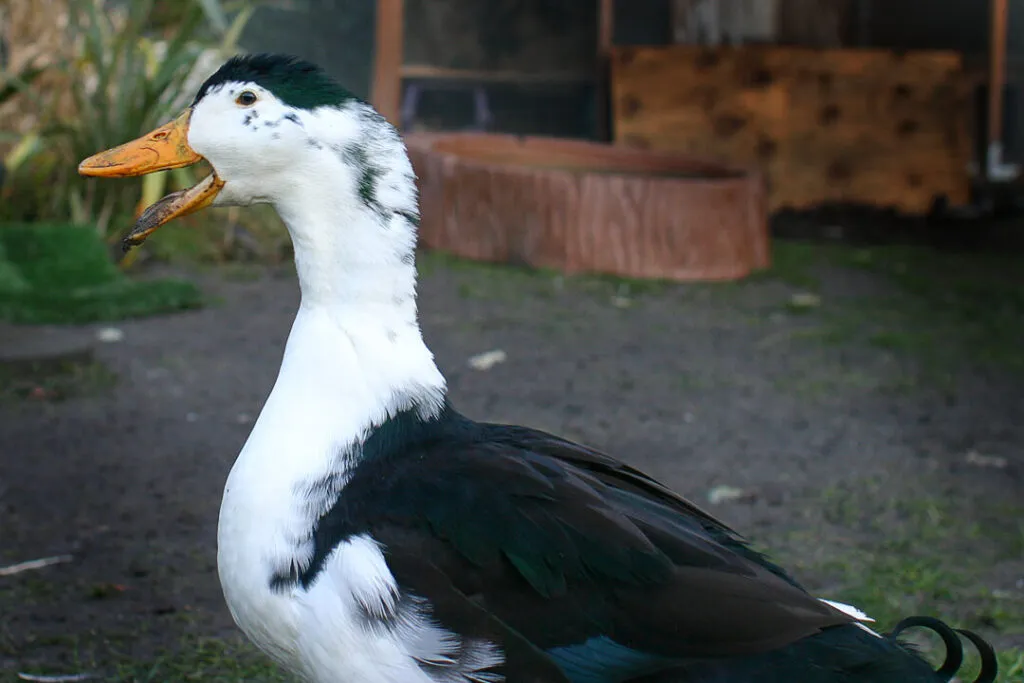
Photo credit: “Aaaaaak!” (CC BY-NC-ND 2.0) by tifotter
Selling or rehoming your drakes is an obvious solution, but not necessarily an easy one. Drakes aren’t exactly in high demand and can be difficult to sell, depending on how picky you are about who you sell them to.
If you’ve been treating your drakes exclusively as pets and want them to go to a home that will treat them likewise, you may have a difficult time selling or giving them away. But pet ducks are growing in popularity, so there may be a chance that you’ll find a suitable forever home for your drake or drakes. Don’t offer your drakes as “free to good home” if you want them to find a forever home; people who want your drakes to eat may be happy to lie in order to obtain free drakes, but are not likely to pay much for them. Offering your drakes for a reasonable price may discourage some unwanted prospective buyers.
Finding a home that wants a drake for breeding is a little bit easier and can be a good option, especially if you have quality purebred drakes. Some people also want drakes as “pond ornaments” or for pest control in gardens.
Many prospective buyers will want your drakes in order to butcher them for meat. If you’re okay with that, getting rid of your excess drakes probably won’t be too difficult.
Here are a few places where you may be able to advertise your ducks:
- Craigslist
- Poster at feed store or other local store
- Ad in local paper
- BestFarmBuys.com
- BackyardChickens buy/sell/trade forum
- Local small farms
2. Rescues, shelters, and sanctuaries
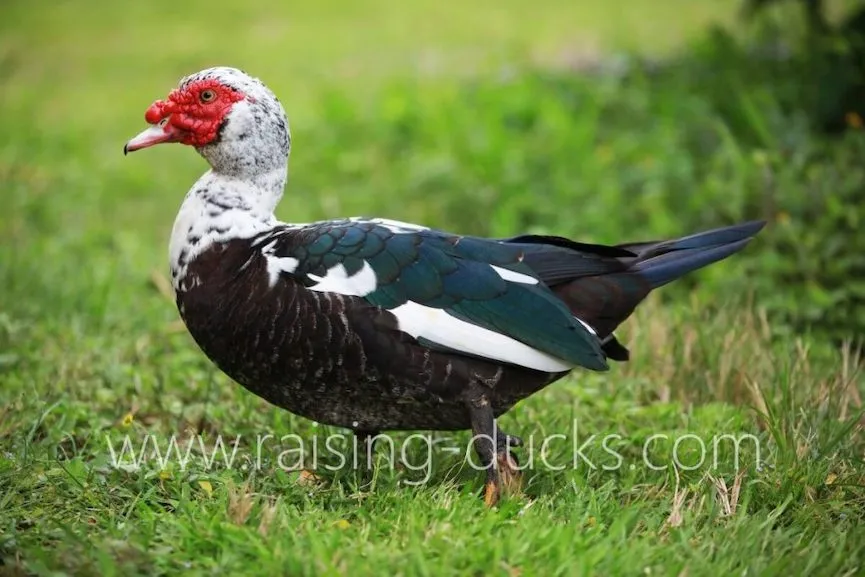
If you can’t find a home for your drakes, there’s a chance you’ll be able to find a rescue or sanctuary that will take them in. Not many rescues and sanctuaries accept ducks, and even those that do often reject Muscovy drakes, but you can search for “farm animal sanctuaries” or “waterfowl sanctuaries” to see if there any options near where you live.
3. Bachelor flock
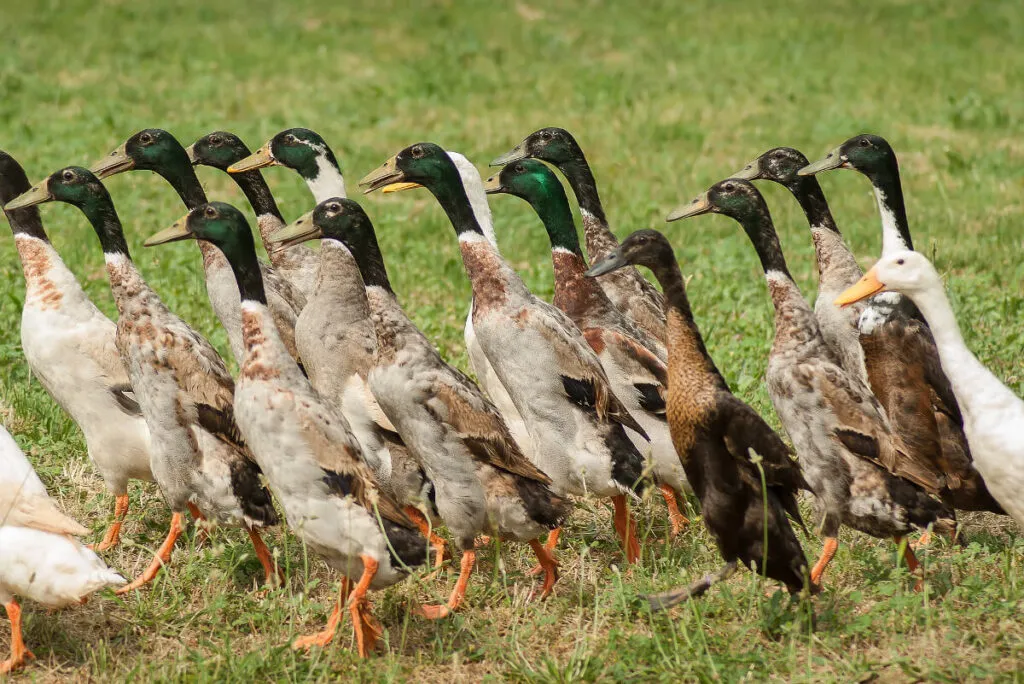
Yes, it’s possible for drakes to live peacefully with each other. Perhaps you can consider keeping your drakes after all.
In all-male “bachelor flocks,” drakes don’t have any females to fight over, so they tend to get along much better. This isn’t a guarantee, however. Some drakes don’t get along no matter what. Sometimes they still fight too much. Still, if you have the facilities to keep your ducks split in two groups, bachelor flocks can be a good option and work out well.
There may also be other ways to split your birds up. For example, if you have two males and two females, you might opt to keep each pair separated.
Some people whose flocks have questionable but not completely untenable ratios (for example, two drakes and four females) find that temporary separation works out. They might separate their drakes for breeding season only, or only during the night, to give the girls a break.
4. Add females
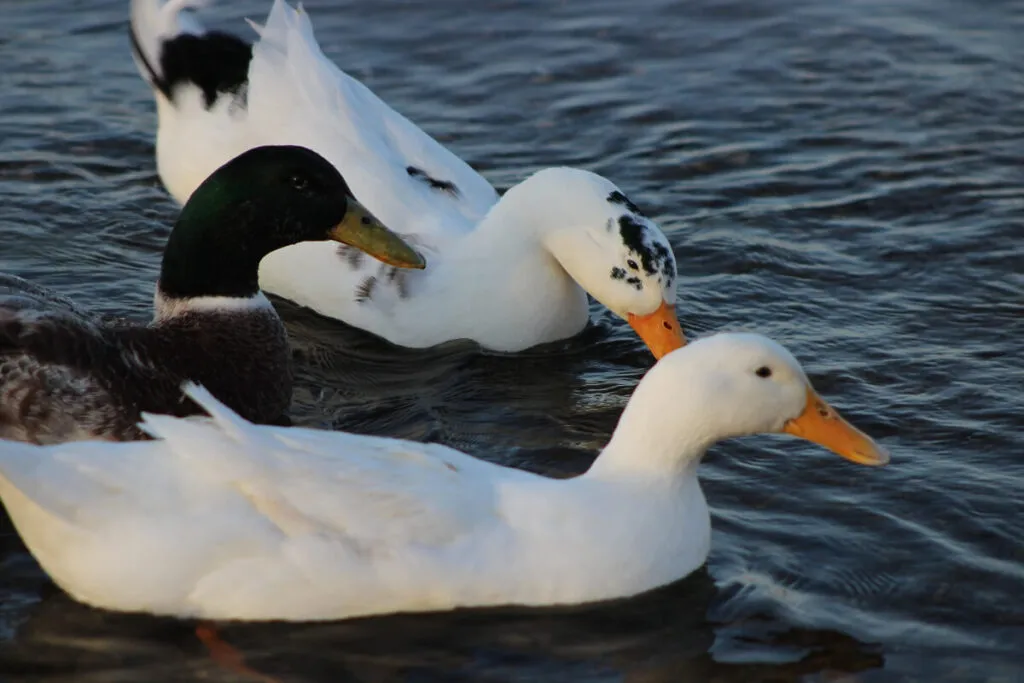
If you have few enough drakes and/or a large enough space, you may be able to balance the ratio by simply adding more females. Two or more drakes can usually live together happily if there are enough females to go around. If you have more than one drake, you need at least four females per drake. A flock with two drakes should have at least eight females, a flock with three drakes should have at least twelve females, and so on. In some cases, you’ll need more females per drake, sometimes up to seven or eight.
Living space is also a factor; two drakes are more likely to live together peacefully if they have space to get away from each other. I have multiple drakes who get along fine while they free-range during the day, but have to be separated in their smaller night pens.
5. Butcher

Another option for dealing with extra drakes is eating them. This can be a tough choice for many, and not even an option for others. Butchering an animal you personally raised can be very difficult, but it is a valid option.
In case you’re on the fence, consider the advantages:
- You know the meat you’re eating is from an animal that had a good life from beginning to end—much better than any factory-farmed animal.
- You’re not contributing to the overpopulation and unwanted drake problem.
- Food security is becoming increasingly shaky; self-sufficiency is becoming more important. Why not start producing some of your own food?
Don’t dump
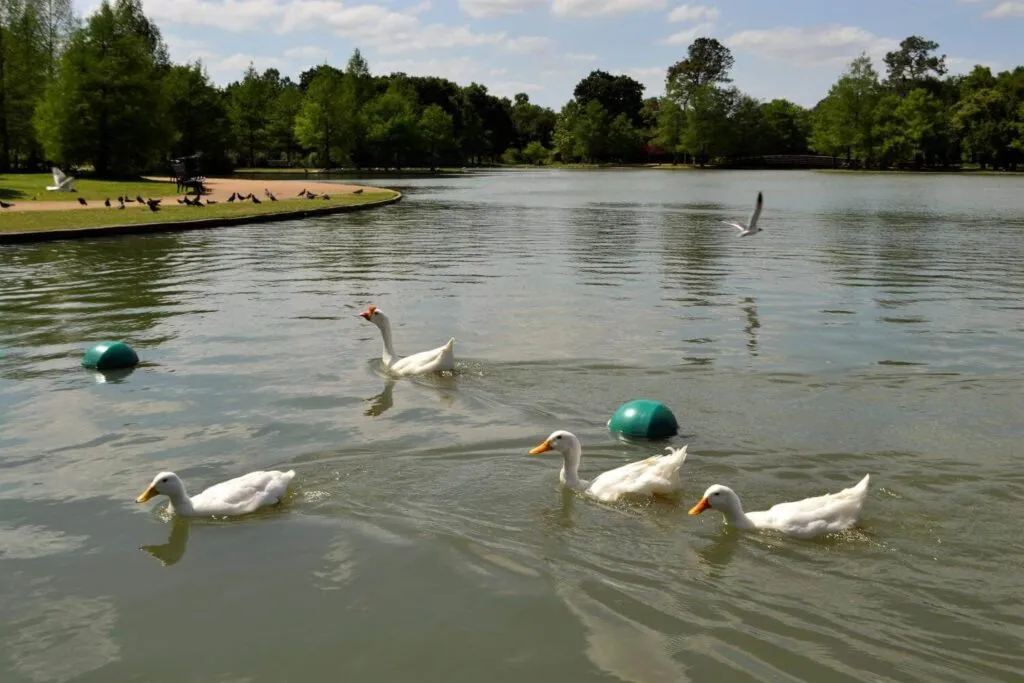
Sadly, it’s common for uneducated or uncaring duck owners to dump unwanted ducks at local ponds or lakes. This is irresponsible and cruel. Domestic ducks raised by humans are unlikely to survive in the wild. For a duck to survive on its own, it needs to learn how to find its own food at a very young age, and human-raised ducklings never learn this. Thus, many dumped ducks, if they aren’t eaten by a predator or run over by a car, will starve to death. Don’t dump ducks.
Don’t breed
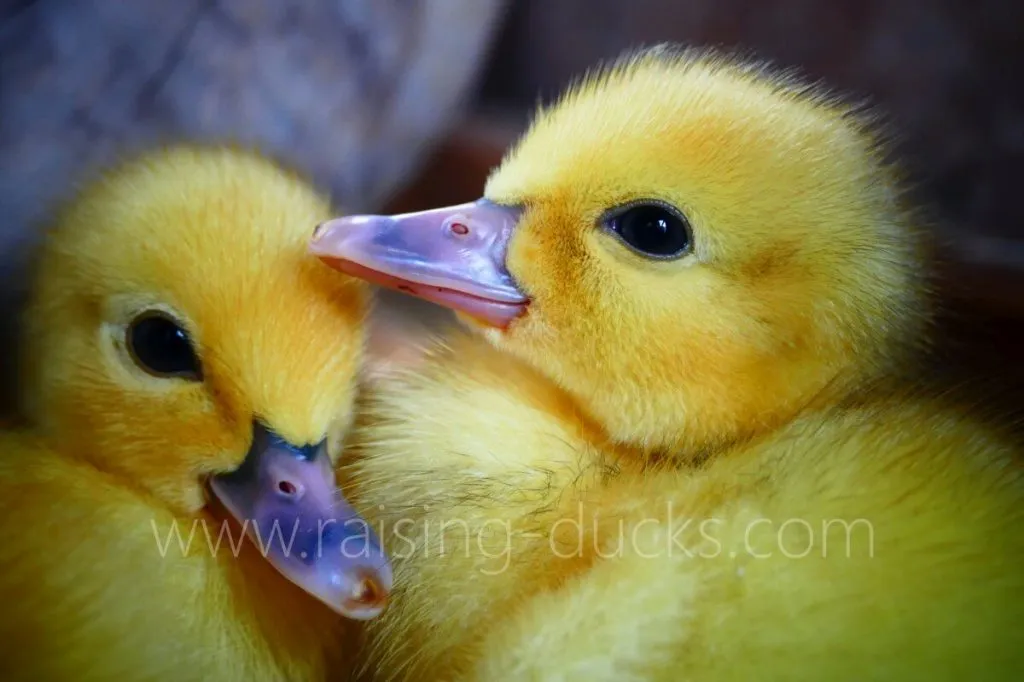
Of course, if you’ve bred your ducks already, it cannot be undone. I will nevertheless issue my advice: don’t breed your ducks—unless you have a plan for what to do with the drakes.
There are far more unwanted drakes than there are people willing and able to keep them.
So don’t hatch ducklings and don’t buy straight run ducklings unless you know you can take full responsibility for the drakes or know where they will end up.
Leave a comment
Your email address will not be published.